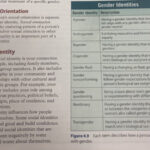Experts have recently compiled a series of apocryphal Biblical texts and translated them into English.
For some of the texts, the compilation marks the first time they can be read in the language.
Apocryphal texts refer to those stories that were not included in the canonical Bible. When the book was being compiled, Christians were debating which ones told the truth about Jesus Christ and which ones didn’t.
The texts that made it to the book were those that were canonized by the Church.
Here are some of the texts included in the recently published compilation, titled “New Testament Apocrypha: More Noncanonical Scriptures (Volume 2).”
These three stories tell incredible tales of wizards, demons in disguise, and a man who was crucified beside Jesus.
Battle against diabolical wizards
This tale is about a battle between demonic wizards and a group of Christians led by Bishop Basil of Caeserea.
According to the translated text, Bishop Basil was instructed by the Virgin Mary to retrieve an image of her and place it on top of two primordial columns, which were in a church in the Greek city of Philippi.
The bishop’s group went to the temple and was confronted by wizards who were hell-bent on destroying the columns.
A battle ensued between the two groups, culminating in the defeat of the wizards after “the earth opened its mouth and swallowed them.”
The story was told in two texts, both from the Monastery of Saint Macarius the Great in Egypt.
Paul Dilley, a professor of religious studies at the University of Iowa, translated the texts from Coptic, an Egyptian language that incorporates the Greek alphabet.
He said that they were likely written around 1,500 years ago.
Demons masquerading as angels
This tale is about seven demons masquerading as angels.
The story began with their capture; the Apostle Peter was suspicious of the “angels” and trapped them in a circle. He sought Heaven’s help to let him know if the angels really were creatures of evil.
Six of them confessed, but the seventh demon challenged Peter, asking him why mortals were forgiven for their sins, but demons were not.
It also said that humans ought to stop blaming the devil for their sins as “I have become weak and am without vigor.” Then, Peter let them go.
Cambry Pardee, a visiting professor of religion at Pepperdine University in London, translated the text, which was likely written about 1,600 years ago.
Pardee told Live Science that the story was fictitious, although it’s possible that some Christians believed it to be true.
Dimas helps Jesus and his family escape
This story is about Dimas, or Dismas/Dymas, the bandit who was crucified next to Jesus.
Before he became a bandit thirty years ago, he worked as a border guard during the rule of King Herod, who wanted to kill baby Jesus.
One night, Dimas was stationed with his father at the border between Judaea and Egypt.
Shortly after the latter went away to do his rounds, Joseph and Mary arrived at the border carrying Jesus. Dimas was convinced by Joseph to let them go and gave them food as well.
His father eventually found out and disowned him, commencing Dimas’ life as a bandit. He would be captured 30 years later when Pontius Pilate served as the governor of Judaea.
Mark Bilby, a senior assistant librarian of scholarly communication and lecturer of Religious Studies at California State University, Fullerton, translated the text from Latin. He suspected that the story, which was written around the 12th or 13th century, was fictitious.
Even though apocryphal texts weren’t part of the canonical Bible, they’re still considered valuable, especially for the people at the time.
Tony Burke, a professor of early Christianity at York University in Toronto and the editor of the compilation, wrote:
“Apocryphal texts were integral to the spiritual lives of Christians long after the apparent closing of the canon and that the calls to avoid and even destroy such literature were not always effective.”
















